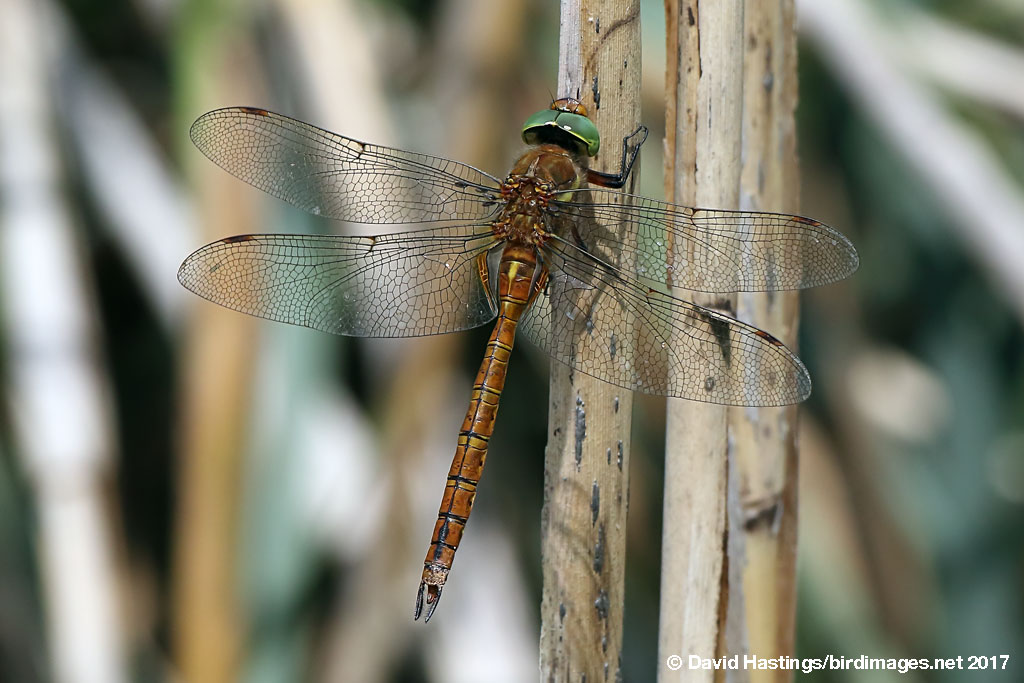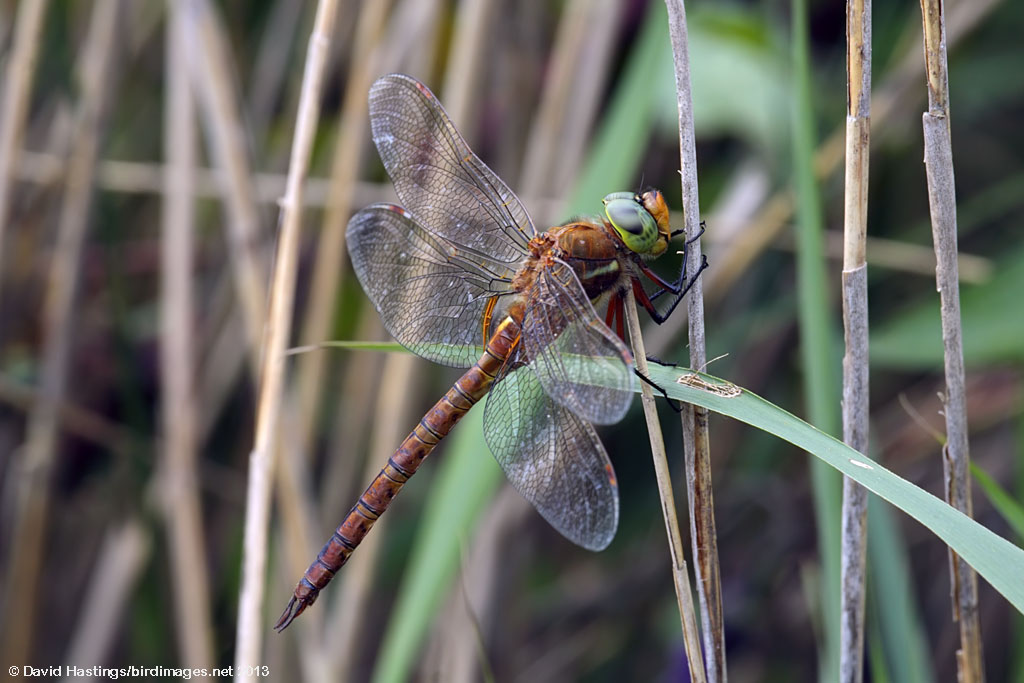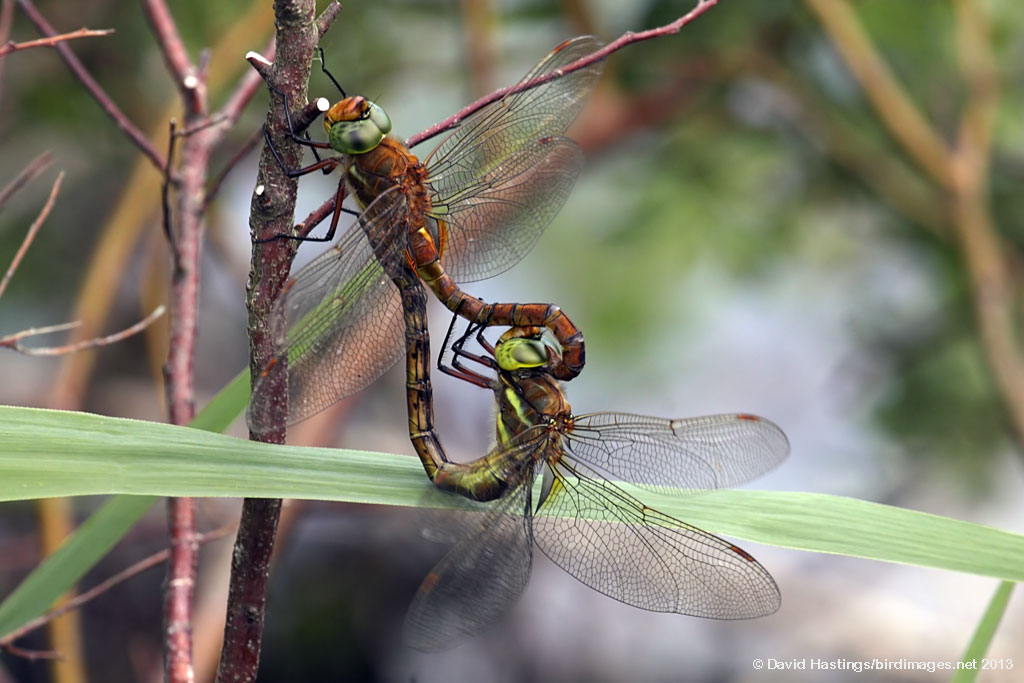Norfolk Hawker (Isoaeshna isoceles) | Species | ||||||||||||||||||||||||||||||||||||||||||||||||||||
Male. Taken at Plitvice Lakes National Park, Croatia, on June 6th 2017. (© David Hastings) (1/1600th sec at f11. Click image for larger version) Male side view. Taken at Hickling Broad, Norfolk on June 26th 2013. (© David Hastings) (1/100th sec at f14. Click image for larger version) Mating wheel. Taken at Catfield Fen, Norfolk on June 25th 2013. (© David Hastings) (1/200th at f11. Click image for larger version) DescriptionWingspan: 78 - 90mm; Length: 62 - 67mm A large brown hawker that flies early in the season. The sexes are similar, having brown abdomens with a distinctive yellow triangle on S2, green eyes, clear wings and amber pterostigma. DNA analysis has shown that this species is not closely related to other aeshnids. In Britain this species is largely restricted to the Norfolk Broads. It is fairly widely distributed in western and central Europe, but is generally local. Typical habitat is grazing marshes and fens with clear water and stable water levels. Eggs are laid into living Water-soldier plants. They hatch after 3-4 weeks and the larvae develop over two years. Males patrol low over grazing-marsh ditches, often clashing and chasing each other (and other species). This a Red data list species and a licence is required to handle it. Earliest UK sighting: 16th June ; Latest UK sighting: 26th June Sightings
| |||||||||||||||||||||||||||||||||||||||||||||||||||||



